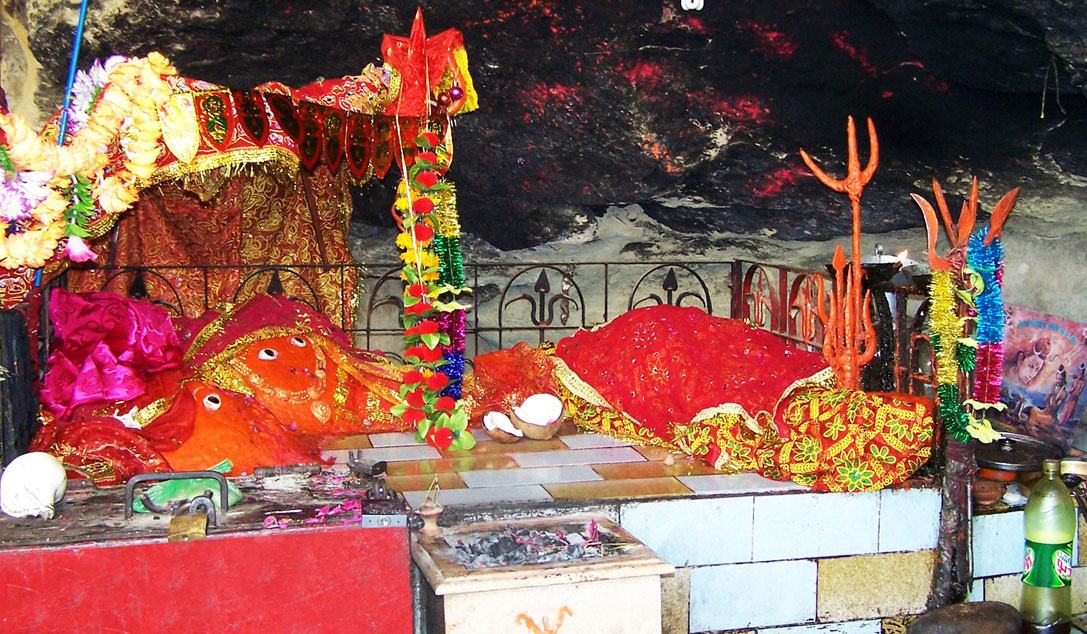Mythological Reference
The Story of Goddess Sati
The mythology surrounding Hinglaj Mata is deeply connected to the story of Goddess Sati. Sati, the wife of Lord Shiva and daughter of King Daksha, is a central figure in Hindu mythology. According to the legends, when Daksha did not invite Lord Shiva to his grand Yajna (sacrificial ritual) and insulted him, Sati could not bear the humiliation. She arrived at the Yajna and, in the midst of the ritual, self-immolated herself. This ultimate sacrifice infuriated Lord Shiva, who began his devastating cosmic dance, the Tandava, while carrying Sati’s lifeless body across the universe.
Shiva's dance was so destructive that the gods feared it would lead to the annihilation of the cosmos. To prevent this disaster, Lord Vishnu used his Sudarshan Chakra to cut Sati's body into pieces. These parts of her body fell at various places on Earth, and wherever they landed, Shakti Peeths were established. Hinglaj is believed to be the place where Sati's head fell, making it one of the most revered Shakti Peeths, where Hinglaj Mata is worshipped as a powerful goddess.
The Origin of Shakti Peeths
In Hinduism, Shakti Peeths hold immense significance as sacred spaces. These are the places where different parts of Goddess Sati’s body fell after being severed by Lord Vishnu’s Sudarshan Chakra. There are a total of 51 Shakti Peeths, located across India, Nepal, Pakistan, and Bangladesh. Each Shakti Peeth is associated with the worship of a specific form of the goddess and holds deep mythological and spiritual importance.
Among these 51 Shakti Peeths, Hinglaj Shakti Peeth is particularly unique, as it is the site where Sati’s head is believed to have fallen. This location is significant because it is situated in the remote Balochistan province of Pakistan, making it a challenging pilgrimage for devotees. Despite the difficult journey, Hinglaj Mata’s shrine is a powerful center of devotion, and the pilgrimage to this sacred place is considered one of the most transformative religious experiences.
Major Legends Associated with Hinglaj Mata
Several ancient and folk legends associated with Hinglaj Mata highlight her divine powers and miraculous deeds. One prominent story describes how a Brahmin saint was performing worship in the harsh desert of Balochistan. During his devotion, Hinglaj Mata appeared before him and granted him salvation. According to this tale, anyone who sincerely invokes the goddess, even in the most difficult circumstances, will receive her divine help and blessings.
Another story tells of a king who established a temple dedicated to Hinglaj Mata. The legend recounts how the goddess appeared to the king in a dream, instructing him to build a temple in her honor at the site. Following her divine command, the king constructed the temple, which remains a revered site for devotees today.
In addition to these stories, the Khatri community holds the belief that Hinglaj Mata is their Kuldevi (family deity). They believe that the goddess’s blessings bring prosperity and protection to their lives. It is said that those who worship Hinglaj Mata with true devotion are freed from life’s many difficulties.
These legends illustrate that the mythological significance of Hinglaj Mata is not only connected to the story of Goddess Sati but is also deeply rooted in the experiences and miracles witnessed by her devotees. Countless stories of devotees overcoming challenges with the grace of Hinglaj Mata continue to be passed down through generations, affirming her role as a powerful and benevolent goddess.
